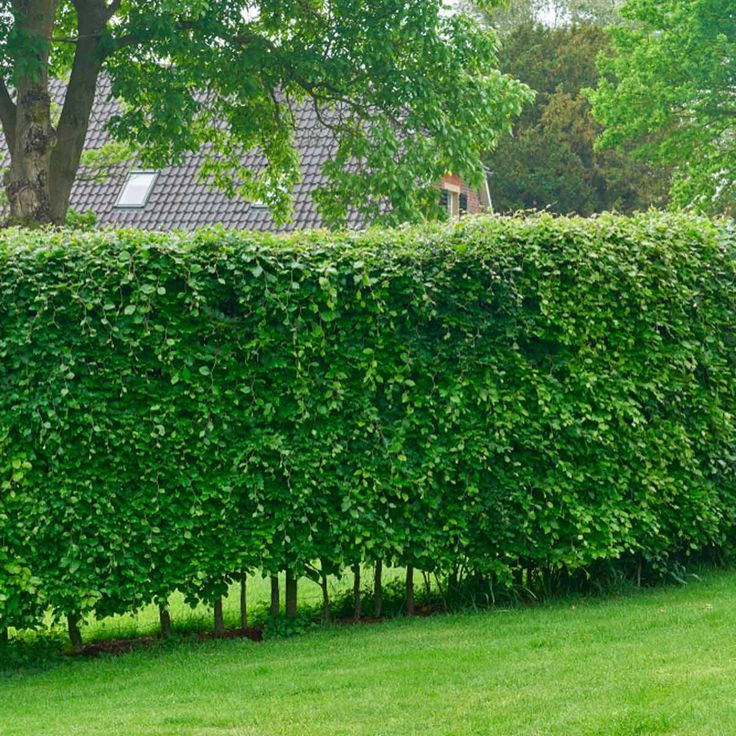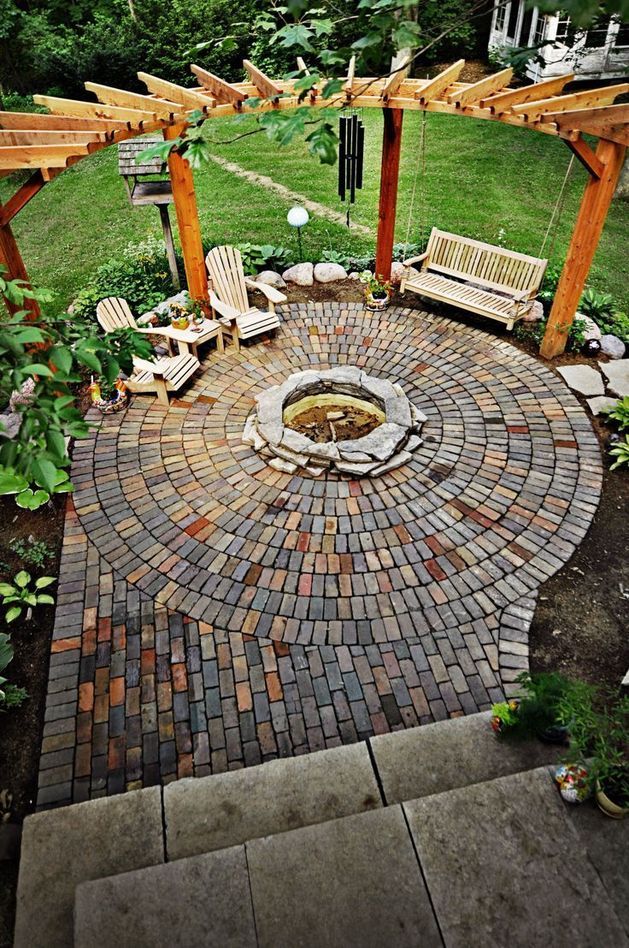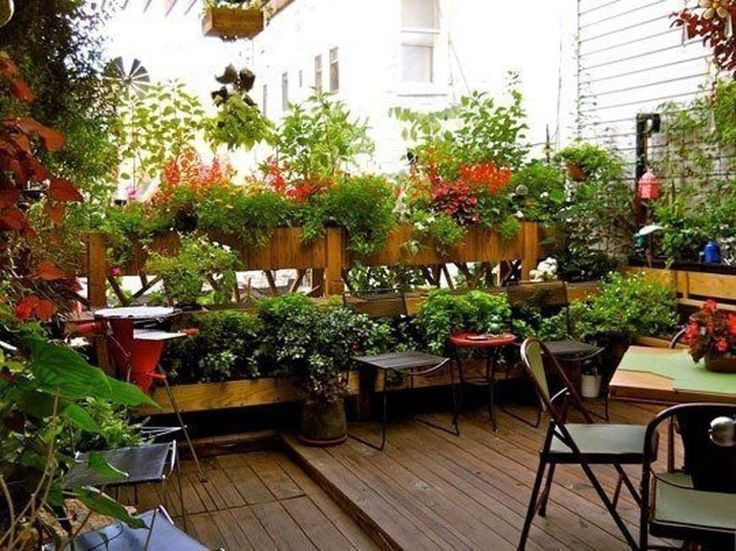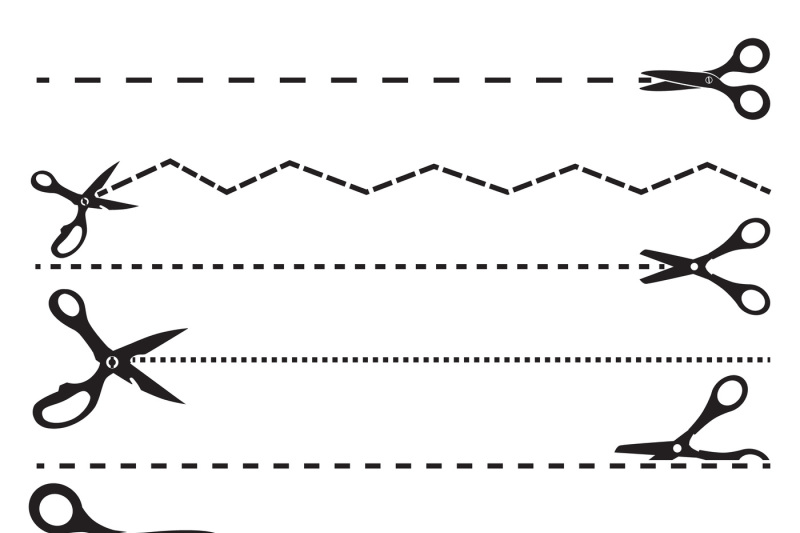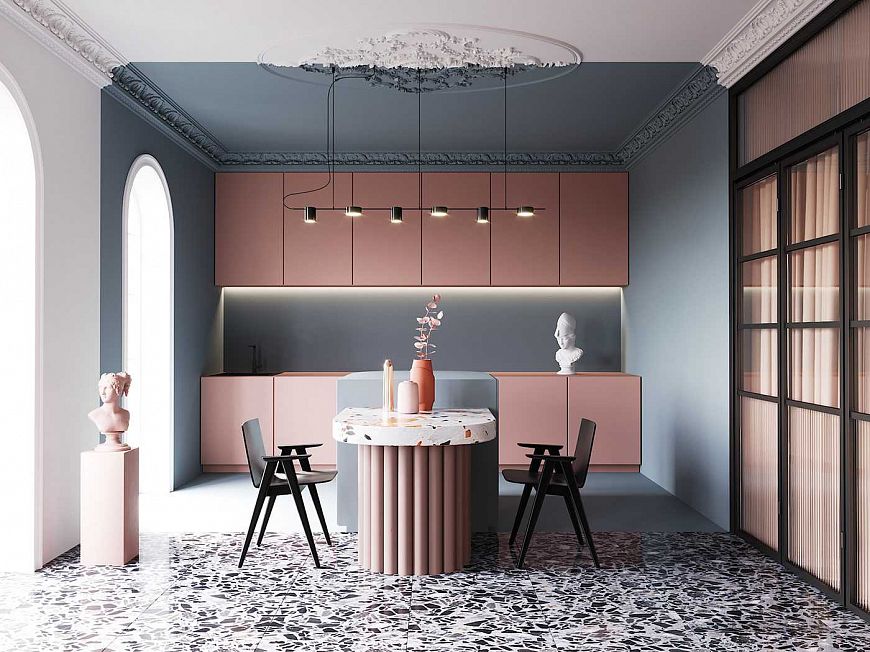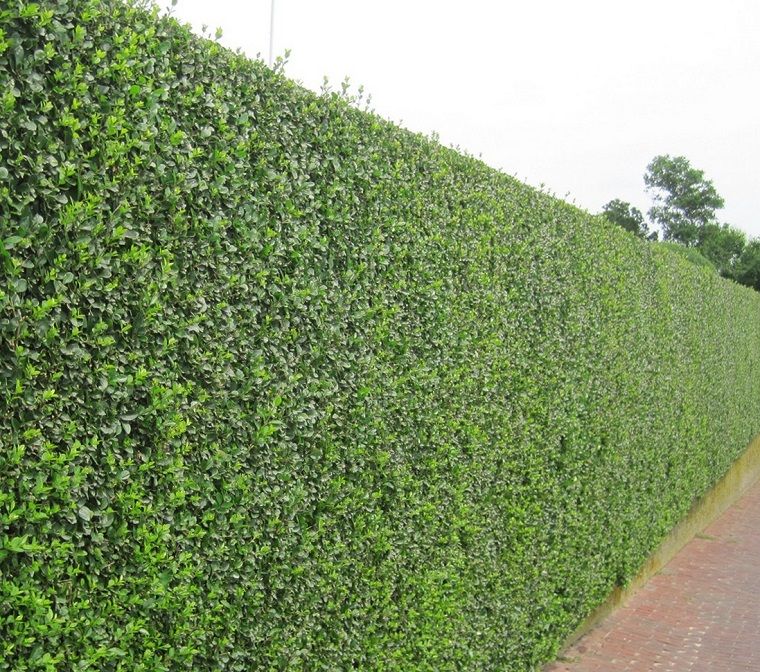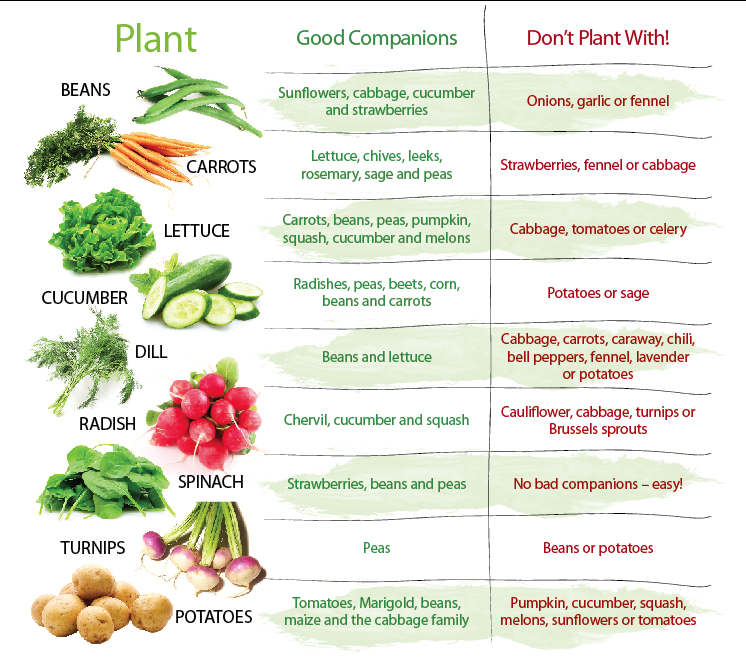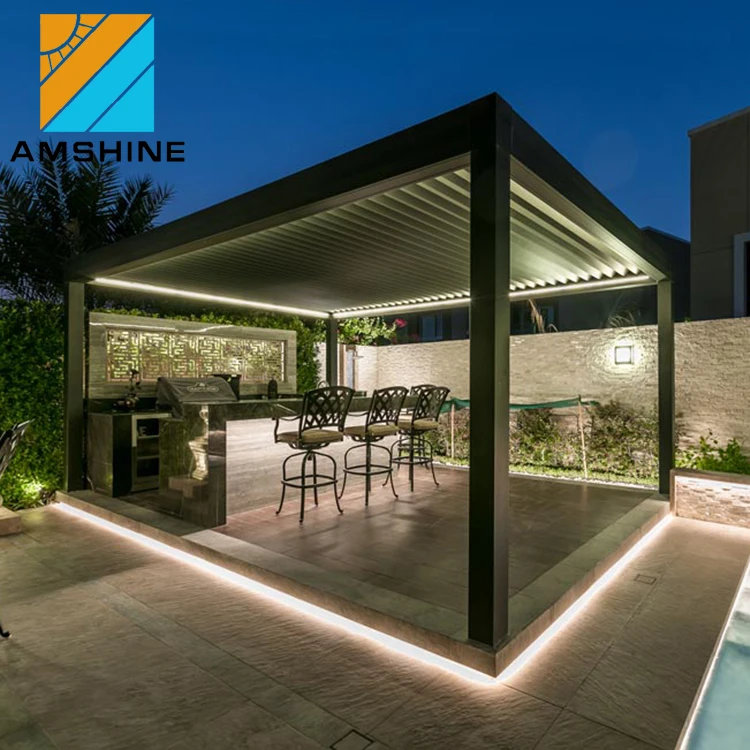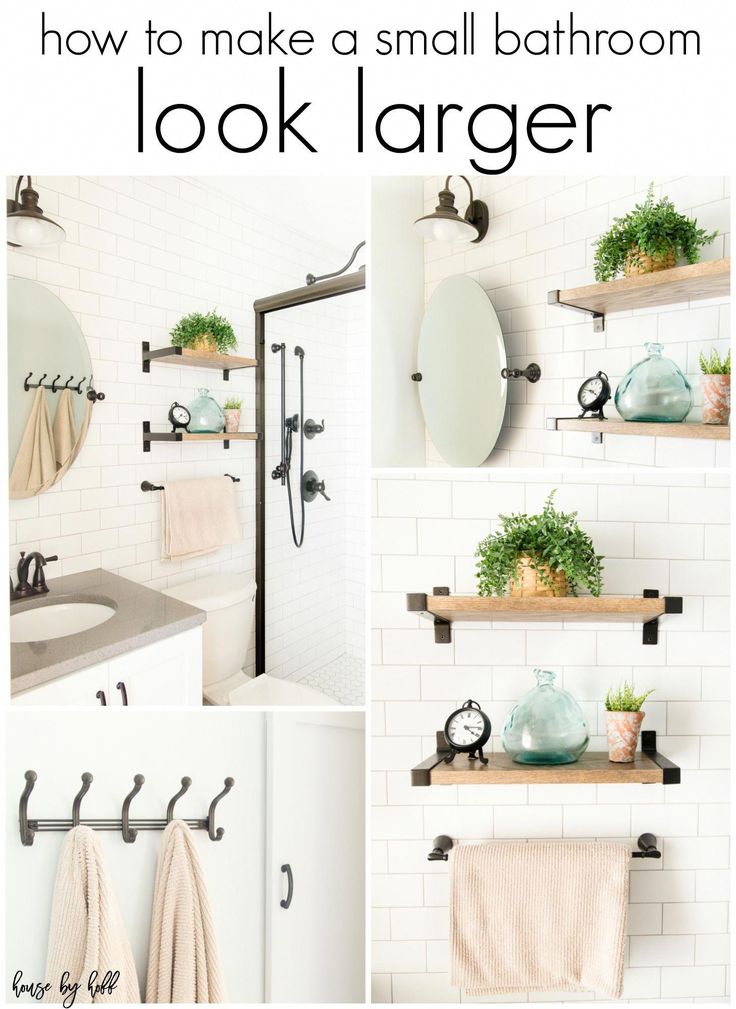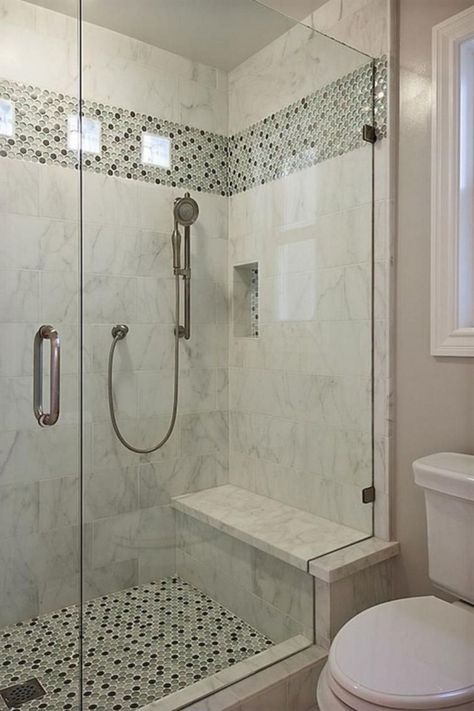Shrubs or trees for privacy
Choosing the Best Screening Trees and Shrubs
From straight rows to clusters, privacy screens are the perfect accessory to landscaping designs. They provide numerous benefits to landscaping and the environment and can be customized to fit a design feel. Depending on preference, they can be composed of trees, shrubbery, or both and can include the type of plants that best fit the geographic location, desired maintenance level, and aesthetic appeal.
Benefits of Privacy Trees and Privacy Shrubs
Besides their visual appeal, privacy trees and shrubs are assets to include in landscaping designs. They serve as a buffer between the yard and the surrounding area’s sights and sounds, and many landscapers use them to establish a boundary line. In particular, privacy trees are used as windbreaks especially in rural areas. Privacy trees provide shade to shrubbery and flowers while privacy shrubs provide shade to smaller shrubbery and flowers.
Adding texture and color to landscape design is important because privacy trees and shrubbery serve a dual purpose of acting as a buffer while creating visual appeal. In addition, privacy trees are beneficial to the environment because they help clean the air by absorbing carbon dioxide, and both privacy trees and shrubbery stimulate a better growing environment for other landscaping elements.
Types of Privacy Trees
Trees that are used for privacy have a dense growth of needles or leaves, with branches that often reach down to the ground. While privacy trees include a variety of options, they typically include evergreens and have columnar, pyramidal, fastigiate or round habits.
- Arborvitae
Typically used as windbreaks, Arborvitae trees are known for being resilient and easy to grow. As evergreen trees, they have a range of growth rates and only need to be trimmed to coincide with the landscaping design. In an urban area, the Arborvitae Emerald Green is ideal because of its slower growth rate and compact size, and in a larger space, the Thuja Green Giant is suitable because of its larger size and the ability to withstand higher wind speeds.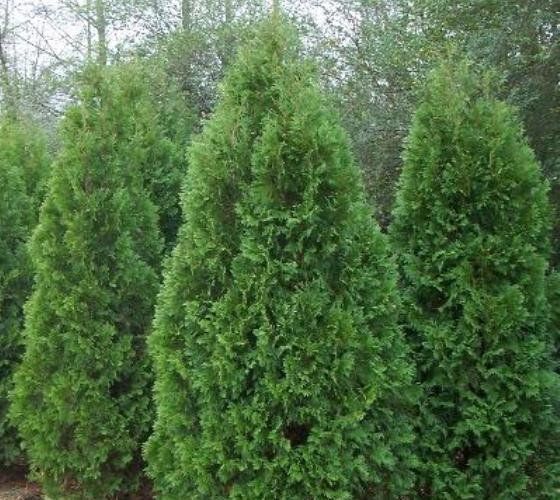
- Cedar
With their barrel-shape, cedars are large conifers that can tolerate many types of soil and have a long lifespan. They grow vertically as well as horizontally if they are given enough space. One of the most common types of cedars is the Eastern Red Cedar, and as the foliage turns, its foliage ranges from dark blue to green to bronze. Cedar trees are common alongside roadways because they can flourish in almost any soil type despite elements added to the soil (ex. salt during the winter). - Cryptomeria
Known as the Japanese Cedar, cryptomeria is not part of the cedar tree family. With a narrow growth up to 100 feet, cryptomeria is recognized for its height and droopy branches with scaly, dark green needles. With cones small and round, the tree has reddish, fibrous, exfoliating bark, and in some varieties, the needles are feathery and turn a beautiful bronze-red in autumn. Cryptomeria trees flourish in environments with damp soil.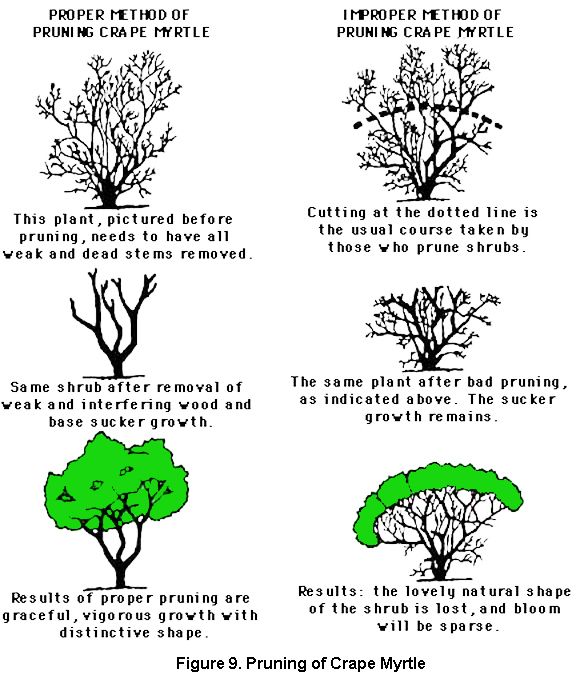
- Cypress
With round branchlets, cypress trees are often pyramidal or fastigiate, which means they have a tall habit with the branches nearly parallel to each other. Famous for its thin, columnar habit and dark green needles, the Italian Cypress is successful in warm climates. Used for dense privacy screens and windbreaks, Leyland Cypress is one of the fastest growing privacy trees that you can choose for your outdoor space. - Holly
Reaching over 20 feet in height, holly trees are dioecious, which means they are either female or male. Since the trees are also grown for their berries, it’s necessary to plant males and females together most of the time. However, some varieties of female holly bear seedless fruit without being pollinated. Some species of holly have golden berries, and others have leaves with splotches of yellow or leaves that are attractively edged in yellow. American Holly Trees make ideal privacy hedges for their large pyramidal shape and ability to remain a lush green year-round.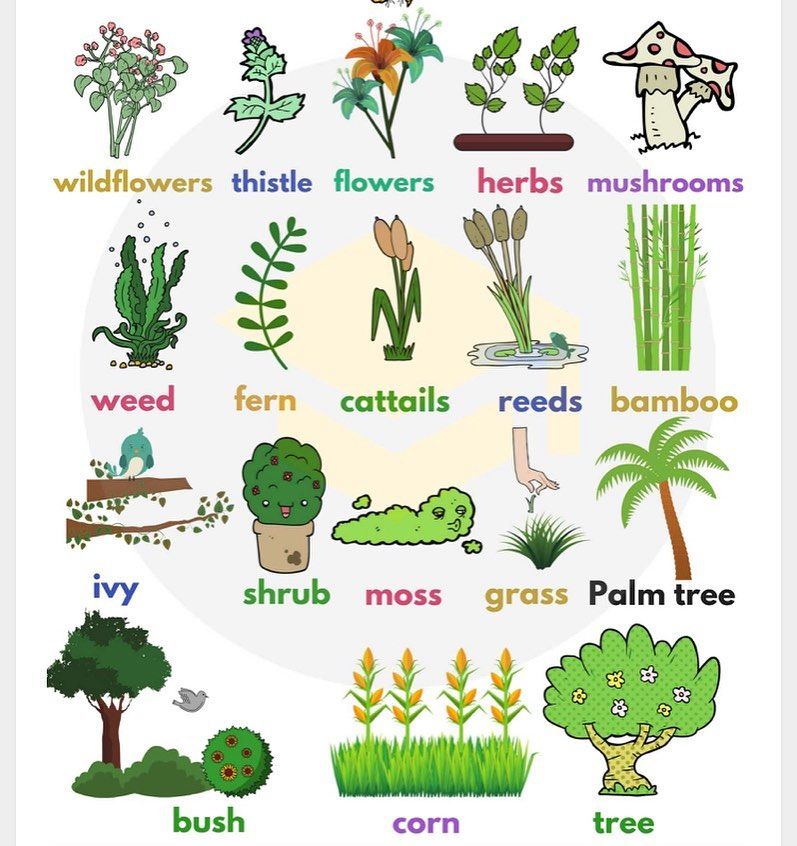
- Juniper
These evergreens have small, narrow, sharp leaflets and a spreading or upright habit. On some juniper trees, the female cones are edible and resemble blackberries, and the bark is reddish and full of resin. Junipers flourish in alkaline soils and are easy to grow from cuttings or seeds. Common juniper varieties have attractive, exfoliating bark and awl-shaped, needle-like leaves and typically have a columnar shape. - Pine
With over 35 pine species in North America, they are ideal trees for privacy screens. Younger pines tend to be more conical in shape, but older pines, whose upper branches tend to have a horizontal spread, have their own beauty and value. Planted in direct sunlight, pines thrive in well-drained soil that is not overly rich. Full of resin, most have bark composed of furrows, and some species have striking reddish bark. The needles of the pine can help distinguish the species because needle growth differs in their groupings, and the cones come in many sizes and can be vertical or horizontal.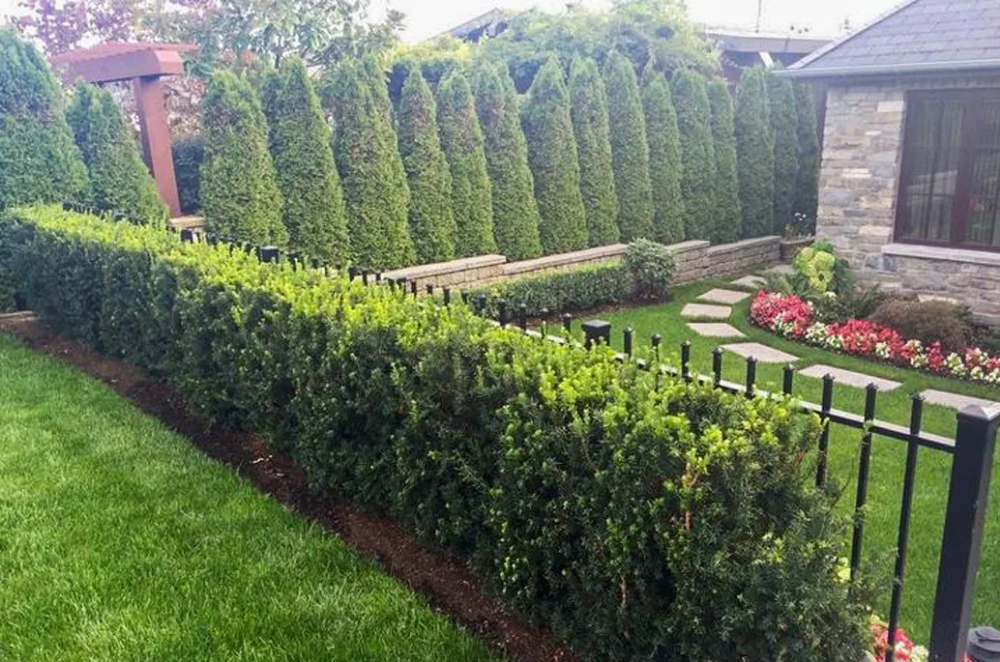
- Spruce
Spruce trees tend to have a conical habit and cones that hang down from the branches. When the needles have fallen off the branches, they leave interesting projections that resemble pegs. Spruces do best in cold, somewhat humid climates. One of the most recognized trees is the Norway Spruce because it often used as the quintessential Christmas tree. Another popular choice is the Baby Blue Spruce because of its slow growth and blue foliage.
Types of Privacy Shrubs
For privacy screens that need to be shorter or need a variety of heights, shrubbery is beneficial to include in landscaping designs. Shrubbery adds different textures, heights, and colors than only using privacy trees.
- Barberry
Either deciduous or evergreen, Barberries are famous for their yellow or red leaves, and they are easy to grow and thrive in a wide range of soils and light levels. - Boxwood
With heights from 2 to 20 feet tall, Boxwood shrubs have a long lifespan and very small leaves that add texture to any privacy screen.
- Cherry Laurel
Considered a tall shrub or a large tree, Cherry Laurel shrubbery is an evergreen noted for its fragrant blossoms that arrive in spring. - Evergreen Euonymus
Native to east Asia, Evergreen Euonymus shrubs grow between 7 and 26 feet tall and have lovely, finely toothed oval leaves, and in the fall, they produce orange fruit. - Forsythia
The brilliantly yellow flowers of the Forsythia are one of the first signs of spring, and this shrub thrives in full sun and grows between 1 to 10 feet high. - Ligustrum (Privet)
Privet shrubbery is a familiar sight in privacy screens and has fragrant flowers and showy fruit that appears in the fall. - Nandina
Nandina shrubs have beautiful bronze or pink leaves that turn scarlet in fall, and it produces both clusters of flowers and bright red berries. - Viburnum
Viburnums produce fragrant flowers in the spring and fruit in the fall that lasts into the winter, and the leaves are deep emerald green in the summer and red in the fall.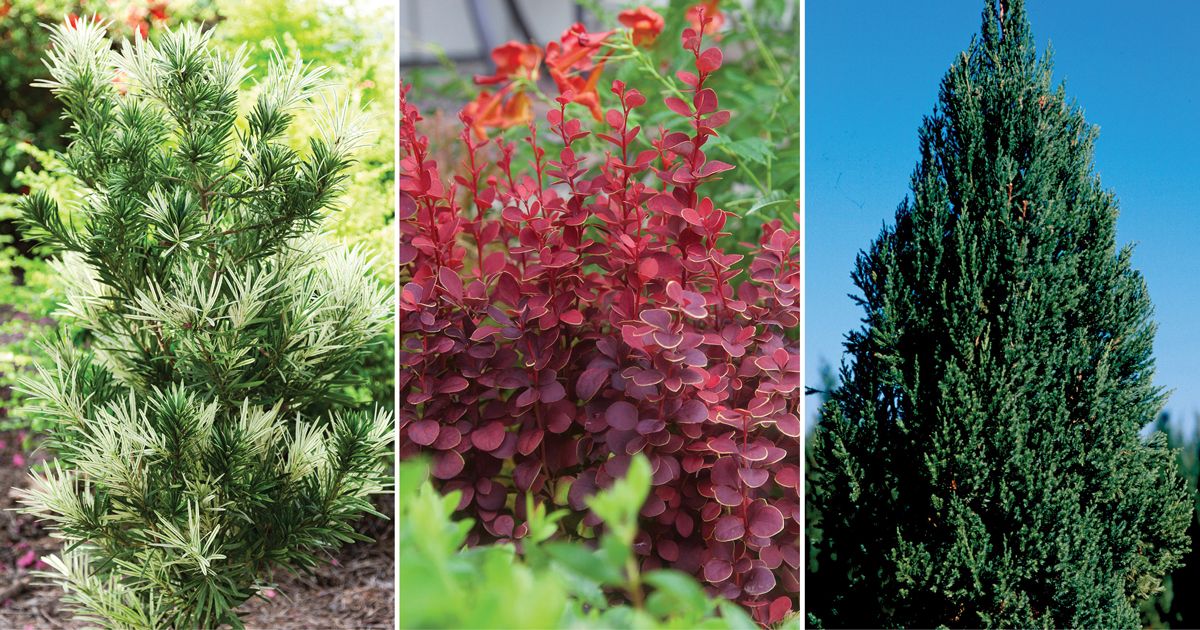
Factors to Consider When Choosing Privacy Plants
A homeowner who wants a privacy screen needs to consider how much land they have and the size of the screen. The amount of usable space and desired size of the privacy screen are important factors to consider because plants will continue to grow. Planted as seedlings or young plants, trees and shrubbery will both grow until they reached their specific height and width.
The maintenance or care level is another important consideration. Some plants will thrive in any condition, but most plants only thrive under certain elements including soil type, amount of sunlight, and environmental factors. Certain types of privacy trees and shrubbery will require more frequent pruning and trimming than other types, and this should be considered when deciding between types.
Another vital consideration is what trees and shrubbery thrive in each USDA planting zone. Each USDA planting zone has specific plant recommendations depending on the weather specifications of a geographical region.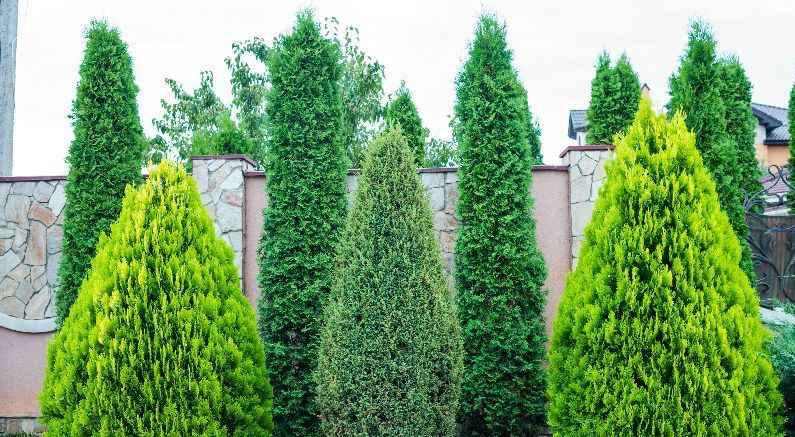
USDA Plant Hardiness Zone
- Zone 2 - Temperature Lows: -50 to -40
This zone is found in northern and central points in Alaska. Ideal plants for Zone 2 are Emerald Green Arborvitae. - Zone 3 - Temperature Lows: -40 to -30
Zone 3 is found in Minnesota, New Hampshire, New York, North Dakota, northern Montana, upstate Maine, Vermont, and Wisconsin. Ideal plants for Zone 3 are American Arborvitae, Eastern Red Cedar, Emerald Green Arborvitae, and White Pine. - Zone 4 - Temperature Lows: -30 to -20
This hardiness zone encompasses Idaho, Michigan, Minnesota, South Dakota, Wisconsin, and Wyoming. Ideal plants for Zone 4 are Emerald Green Arborvitae, Green Mountain Boxwood, Shamrock Holly, and Skyrocket Juniper. - Zone 5 - Temperature Lows: -20 to -10
Zone 5 covers much of Colorado, Indiana, Iowa, Massachusetts, Nebraska, New York, northern Illinois, and northern Pennsylvania.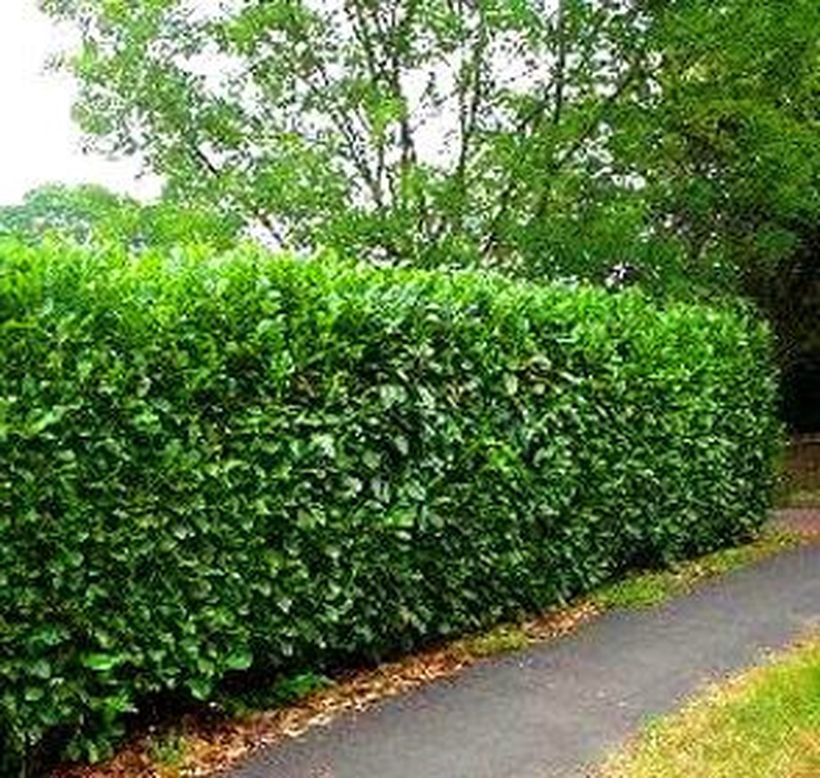 Ideal plants for Zone 5 are American Holly, Eastern Red Cedar, Green Giant Arborvitae, and Manhattan Euonymus.
Ideal plants for Zone 5 are American Holly, Eastern Red Cedar, Green Giant Arborvitae, and Manhattan Euonymus. - Zone 6 - Temperature Lows: -10 to 0
This hardiness zone is also found in Connecticut, Delaware, Eastern Colorado, Illinois, Kansas, Kentucky, Maryland, Missouri, New Jersey, New Mexico, Ohio, southern Pennsylvania, and West Virginia. Ideal plants for Zone 6 are Cherry Laurel, Golden Euonymus, Leyland Cypress, and Nellie Stevens Holly. - Zone 7 - Temperature Lows: 0 to 10
This zone encompasses Arizona, Arkansas, New Mexico, North Carolina, northern Texas, Oklahoma, and Tennessee. Ideal plants for Zone 7 are Green Mountain Boxwood, Oregon Grape Holly, Skyrocket Juniper, and White Pine. - Zone 8 - Temperature Lows: 10 to 20
This zone covers Alabama, central Texas, coastal Oregon, coastal Washington, Georgia, Mississippi, North Carolina, northern California, and South Carolina. Ideal plants for Zone 8 are American Holly, Eastern Red Cedar, Green Mountain Boxwood, and Red-tipped Photinia.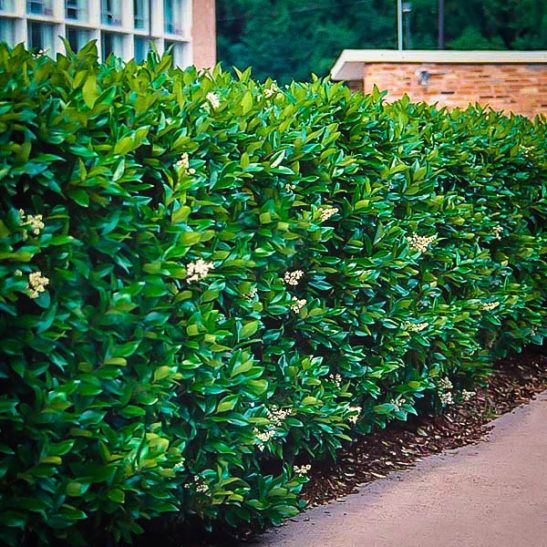
- Zone 9 - Temperature Lows: 20 to 30
Zone 9 covers Arizona, California, East Texas, Florida, Louisiana, southwestern Oregon. Ideal plants for Zone 9 are Cherry Laurel, Eastern Red Cedar, Golden Bamboo Palm, and Leyland Cypress. - Zone 10 - Temperature Lows: 30 to 40
This zone is found in central Florida, southern Arizona, and southern California. Ideal plants for Zone 10 are Golden Bamboo Palm, Leyland Cypress, and Red-tipped Photinia. - Zone 11 - Temperature Lows: 40 to 50
This zone is found in southern California and southern Florida. An ideal plant for Zone 11 is the Golden Bamboo Palm.
How to Arrange a Privacy Screen
When designing how a privacy screen will be laid out, the visual appeal is important. Decisions should be made on if the privacy screen will include the same type of privacy plants or if a mixture will be utilized. From the layout perspective, privacy screens are designed as a single row, clusters, or multi-rows, and the choice depends on aesthetic preferences and the intended use of the privacy screen.
How the privacy screen looks is important because it will serve as a landscaping focal point. Using the same type of trees or shrubbery will create a cohesive look when all the trees or shrubbery are the same height and width. On the other hand, using a mixture of plant types will add depth to a landscaping design and requires minimal maintenance to maintain the look.
The privacy screen’s layout should be chosen based on the reason behind the privacy screen. For example, a privacy screen used as a visual buffer will be laid out differently than one used as a windbreak. A single-row privacy screen forms a boundary line while creating privacy and maximizing yard space, and a cluster privacy screen is ideal when trying to add privacy from a particular area and looks best when planted in odd numbers. A multi-row privacy screen uses staggered trees and shrubbery to create a wall-like design that is used to block noise and winds.
Privacy Shrubs: 13 Evergreens to Consider
Photo by Karen BussoliniIf you cherish your privacy and want to ward off noise pollution from your street, planting evergreen privacy trees and shrubs around your yard is a great way to create a barrier between your home and the outside world.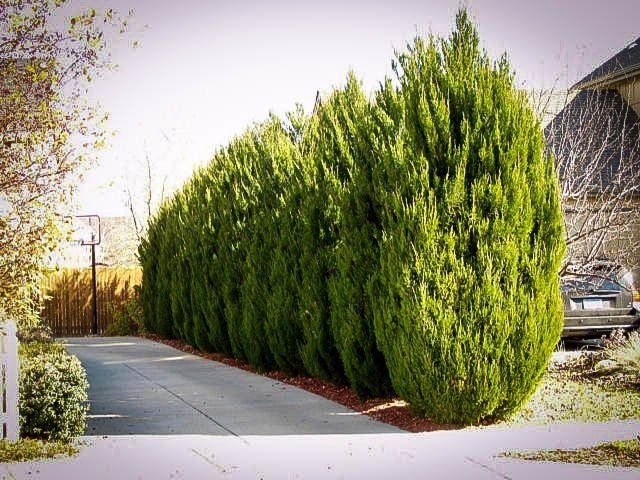
A line of evergreen trees or shrubs can provide year-round seclusion even better than a fence, because there are no municipal restrictions on how high they can grow. (Towns usually require permits for a fence over 6 feet tall.) However, if there are power lines above your screen, you don't want trees so big that they'll grow into the wires. Also pay attention to their width at maturity; the spacing between trunks when you plant should equal mature width.
While the ideal growing conditions vary by species, one thing all these evergreens have in common is a love of the sun. Give them at least 6 hours of direct sunlight a day and their foliage will remain full and keep your privacy intact.
Read on to learn about some of the best evergreen trees and shrubs that are low maintenance, beautiful and easy to plant in your yard.
Shown: For more information on the Green Giant arborvitae shown here, see the next image.
Plant an Evergreen Screen
Muddy Creek NurseryHow to do it: Plant an evergreen privacy screen on the north side of your house to block winter winds.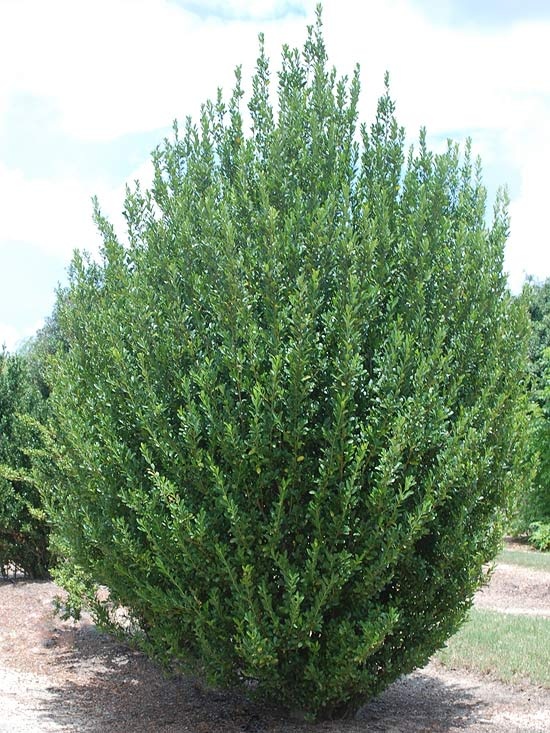 Arborvitae 'Green Giant' can climb 3 feet in one year.
Arborvitae 'Green Giant' can climb 3 feet in one year.
Estimated cost: $92 for two; Jackson & Perkins
Leyland Cypress
Photo by Mihaela Ninic/ Alamy(x Cupressocyparis leylandii)
Foliage: Taking a broad to tapering form, this dense hybrid has smooth bark with dark green to grayish fans of foliage.
Dimensions at Maturity: Grows up to 70 feet high and 15 feet wide in planting zones 6 to 10.
Spacing: 15 feet
Rocky Mountain Juniper
Photo by KENPEI/ GFDL(Juniperus scopulorum 'Wichita Blue')
Foliage: Bright blue-gray needles cover this shrub, which takes a pyramidal form with exfoliating red-brown bark.
Dimensions at Maturity: Grows up to 30 feet high and 6 feet wide in planting zones 3 to 7.
Spacing: 6 feet
Italian Cypress
Photo by Hans A. Rosbach/ GFDL-CC
Rosbach/ GFDL-CC (Cupressus sempervirens)
Foliage: A tall, narrow conifer, it forms a dense column of gray-green to dark green needles and upright branches.
Dimensions at Maturity: Grows up to 70 feet high and 20 feet wide in planting zones 7 to 10.
Spacing: 20 feet
White Spruce
Photo by Cruiser/ GDFL(Picea glauca)
Foliage: This narrow, conical-shaped tree has stiff blue-green needles and gray-brown bark.
Dimensions at Maturity: Grows up to 60 feet high and 20 feet wide in planting zones 3 to 6.
Spacing: 20 feet
Hicksii Yew
Photo by mobot.org(Taxus x media 'Hicksii')
Foliage: The soft needles form a dense, dark green barrier, but can brown with exposure to winter winds.
Dimensions at Maturity: Grows up to 20 feet high and 12 feet wide in planting zones 4 to 7.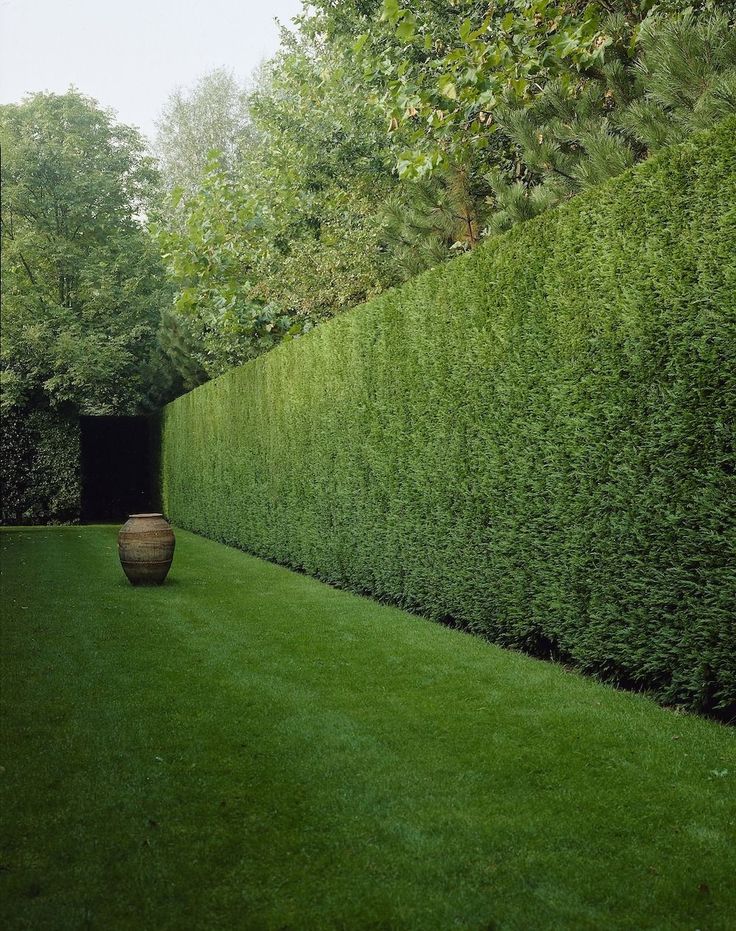
Spacing: 12 feet
American Holly
Photo by B. Christopher/ Alamy(Ilex opaca)
Foliage: A narrow shrub with a pencil-like form, it has multiple stems covered in glossy dark green leaves. Small green-white flowers show up in spring.
Dimensions at Maturity: Grows up to 10 feet high and 3 feet wide in planting zones 6 to 8.
Spacing: 3 feet
Japanese Holly
Photo by Derek Ramsey/ Chanticleer Garden(Ilex crenata 'Sky Pencil')
Foliage: A narrow shrub with a pencil-like form, it has multiple stems covered in glossy dark green leaves. Small green-white flowers show up in spring.
Dimensions at Maturity: Grows up to 10 feet high and 3 feet wide in planting zones 6 to 8.
Spacing: 3 feet
Western Red Cedar
Photo by JFKCom/ GFDL(Thuja plicata)
Foliage: A large tree with reddish-brown bark, it grows in a conical shape that broadens with age.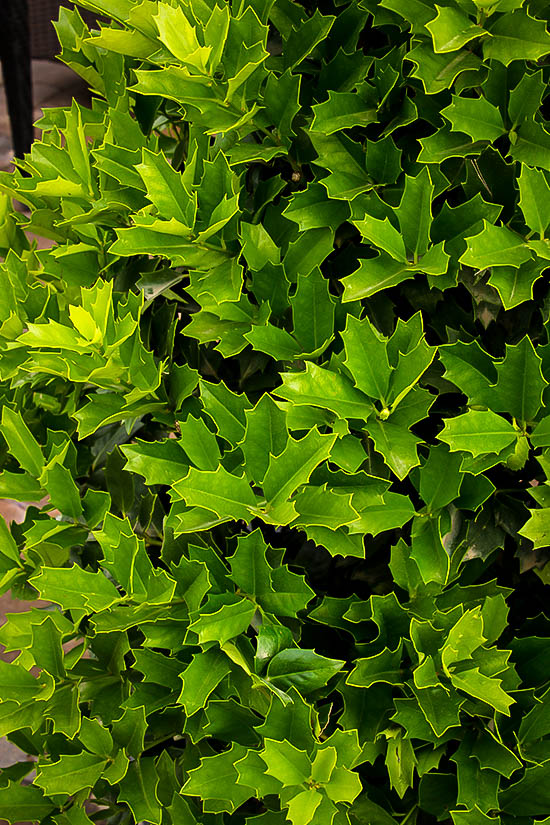
Dimensions at Maturity: Reaches up to 70 feet high and 25 feet wide in planting zones 5 to 7.
Spacing: 25 feet
Techny Arborvitae
Photo by Flickr(Thuja occidentalis 'Techny')
Foliage: This dwarfed, compact arborvitae keeps its color all winter.
Dimensions at Maturity: Grows up to 15 feet high and 10 feet wide in planting zones 2 to 8.
Spacing: 10 feet
Emerald Green Arborvitae
Photo by mobot.org(Thuja occidentalis 'Smargd')
Foliage: This semidwarf shrub forms a compact, narrow pyramid of bright green foliage in flat fans.
Dimensions at Maturity: Grows up to 14 feet high and 4 feet wide in planting zones 2 to 7.
Spacing: 4 feet
Eastern Red Cedar
Photo by USDA(Juniperus virginiana)
Foliage: Broad, conical tree with horizontal branching covered in dark blue-green scale-like foliage and gray to reddish-brown exfoliating bark.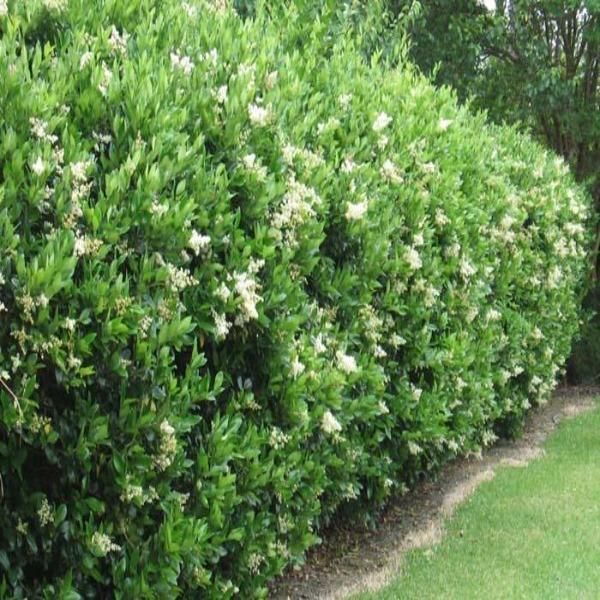
Dimensions at Maturity: Grows up to 65 feet high and 25 feet wide in planting zones 2 to 9.
Spacing: 25 feet
Nigra Arborvitae
Photo by <a href=”http://www.packsnursery.com/NigraArborvitae.html” target=”_blank”>Pack’s Nursery, Inc.</a>(Thuja occidentalis 'Nigra')
Foliage: A conical or narrow pyramidal tree with flat, dark green needles.
Dimensions at Maturity: Grows up to 30 feet tall and 10 feet wide in planting zones 3 to 7.
Spacing: 10 feet
Smooth Cypress
Photo by blickwinkle/ Alamy(Cupressus arizonica var. glabra)
Foliage: This drought-tolerant conifer has smooth, reddish-purple bark and pointed blue-gray needles.
Dimensions at Maturity: Grows up to 50 feet high and 12 feet wide in planting zones 7 to 9.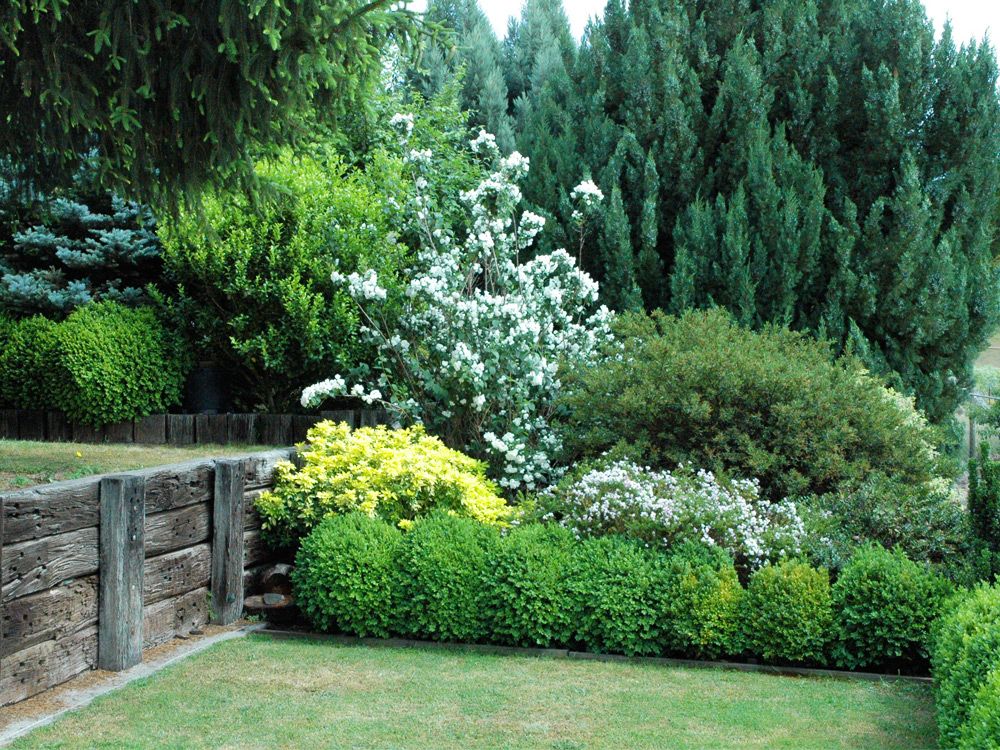
Spacing: 12 feet
Garden trees and shrubs
Garden trees and shrubs
Garden trees and shrubs must meet certain requirements. No garden is complete without trees and shrubs. They divide the site into functional zones, provide an opportunity to retire. In winter, when the lawn and flower beds are covered with snow, it is the trees and shrubs that give the landscape a picturesque look. To design your garden well, choose trees and shrubs that meet your needs and match the conditions of your site.
When buying seedlings, be sure to specify how fast the plants will grow and what size they will reach. This is where you can count. For example, common spruce (Picea abies) is hardly appropriate in a small area, as it grows half a meter every year, reaching a height of 40 meters at a certain age. It is impossible to cut this species - after that, the spruce comes to its senses for a long time and looks very unpresentable. In a small garden, it is better to plant such an evergreen plant as a yew berry (Taxus baccata), which is characterized by slow growth and easy pruning.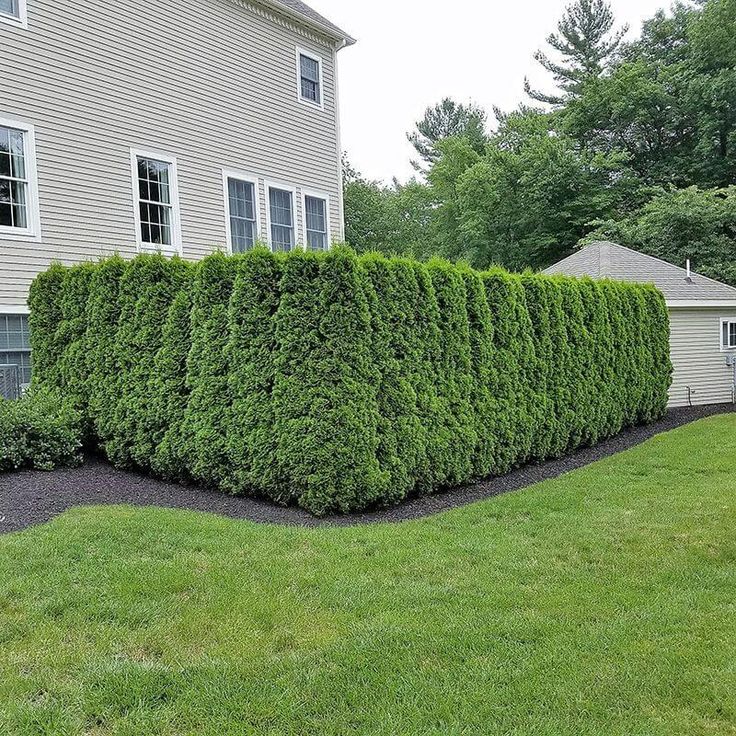
When buying plants, pay attention even to the variety name
Tip: It all depends on the variety. The same can be said about maples - different types are very different. Norway spruce (Picea abies) reaches a height of 40 m, and the decorative form of this tree ‘Maxwellii’ does not exceed one and a half meters. Norway maple (Acer platanoides) grows up to 30 m, and the variety of the same species ‘Globosum’ - only up to 6 m. When buying seedlings of spruce and maple, be sure to ask what size adult plants will reach. Seedlings are best purchased in special nurseries.
In general, arrangements of trees and shrubs are best planned in advance. If, say, a herbaceous perennial in spring or autumn can be transplanted at any age, then this cannot be done with trees or shrubs that are several years old. Meanwhile, it is difficult to refuse them when they have already grown up and began to look very impressive. Draw a sketch of your garden and, keeping proportions, place the figures of trees and shrubs there in the size that they reach in adulthood.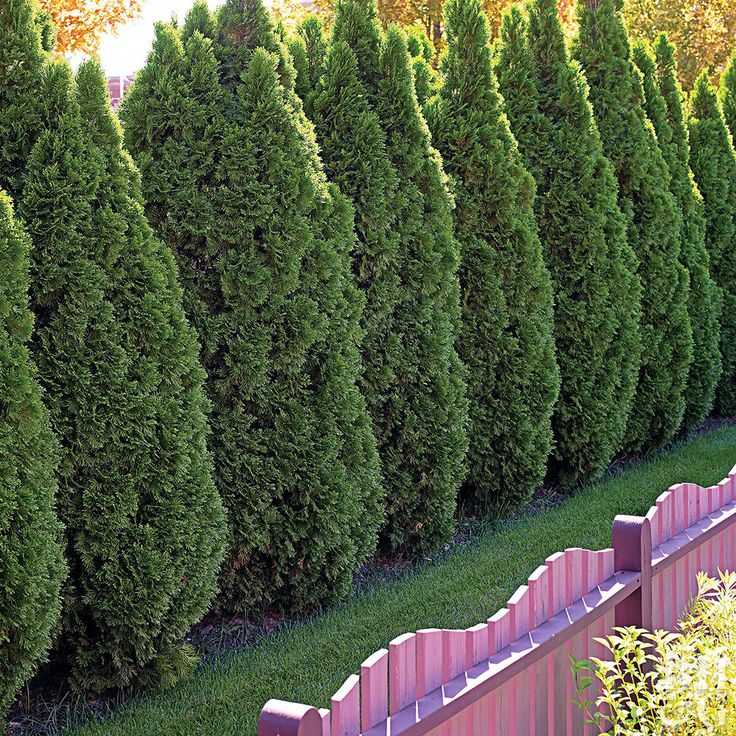 Specify their height and crown diameter. When choosing a place to plant, consider the lighting: for example, will a ten-year-old tree cast a shadow on the garden or on the terrace, and will the overgrown crown interfere with the neighbors?
Specify their height and crown diameter. When choosing a place to plant, consider the lighting: for example, will a ten-year-old tree cast a shadow on the garden or on the terrace, and will the overgrown crown interfere with the neighbors?
Green curtains or bright accent: Decide in advance whether the shrub should serve as a beautiful green background or draw attention to itself with impressive flowering.
A green backdrop will be created by such design hits as controversial turf (Cornus controversa) with a long crown, fan maple (Acer palmatum) or beautifully trimmed boxwood. They will decorate the garden all year round. Spectacular shrubs, such as flowering turf (Cornus florida) or Japanese ornamental viburnum folded (Viburnum plicatum), will become a bright accent in the garden.
There is no doubt that during the flowering period they will attract attention.
Small groups will look more advantageous if they are made up of plants that differ in contrast from each other in appearance.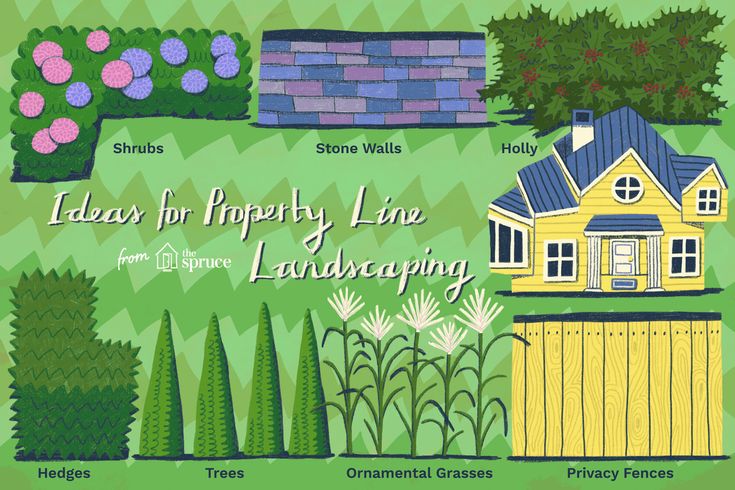 For example, shrubs such as rhododendron, which grow strongly in breadth, can be combined with a columnar juniper looking up. Don't be afraid to mix conifers and deciduous plants. Ornamental flowering shrubs can be supplemented with plants with expressively colored leaves. The leader in the composition should be the largest copy, around which other plants will be collected. Keep the necessary distance between trees and shrubs, even if it seems that because of this the group will not look impressive enough.
For example, shrubs such as rhododendron, which grow strongly in breadth, can be combined with a columnar juniper looking up. Don't be afraid to mix conifers and deciduous plants. Ornamental flowering shrubs can be supplemented with plants with expressively colored leaves. The leader in the composition should be the largest copy, around which other plants will be collected. Keep the necessary distance between trees and shrubs, even if it seems that because of this the group will not look impressive enough.
The choice of plants that can serve as hedges along the boundaries of the plot is very large. Lilacs planted in a row, decorative viburnum and forsythia look very impressive. However, these shrubs take up quite a lot of space: they will have to take a strip of at least 2-3 m wide. Much less space is needed for a trimmed hedge of arborvitae or cotoneaster (only 0.5-1 m wide). An even more economical option: a screen of climbing plants. On a pergola, vines such as clematis or climbing rose form almost impenetrable flowering walls. By the way, pergolas and sheared hedges beautifully divide the garden into zones.
By the way, pergolas and sheared hedges beautifully divide the garden into zones.
In shady places, even near the northern wall of the house, shrubs such as rhododendrons with flowers of different colors and hydrangeas feel good. Both of these plants grow best in loose fertile soil.
votes
Article's rating
10 trees for privacy and shade in your yard
Planting trees for privacy and shade will enhance your yard landscape by providing natural protection from neighbors and roads. Find beautiful, low maintenance and fast growing options.
Thank you for registering with Realhomes. You will soon receive a confirmation email.
There was a problem. Refresh the page and try again.
By submitting information, you agree to the Terms of Use (opens in a new tab) and Privacy Policy (opens in a new tab) and you are at least 16 years old.
These top trees for privacy and shade are an asset in any open back or front yard.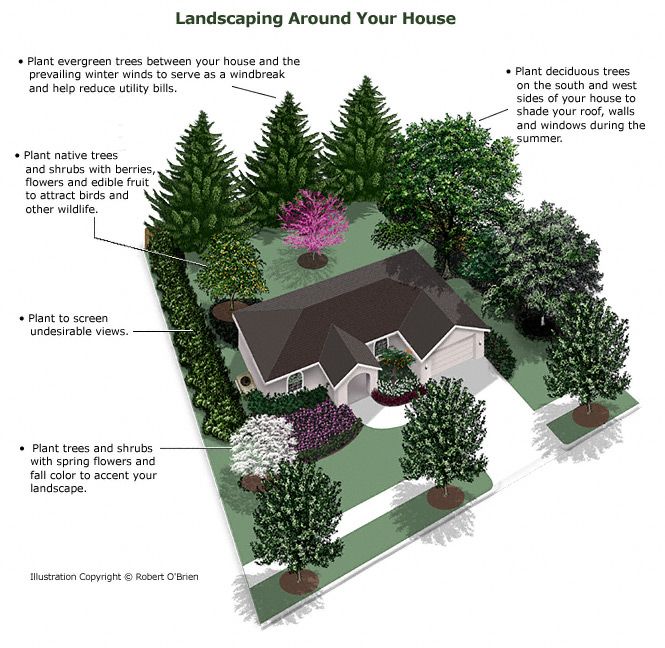 Few of us are blessed with large yards that are overlooked and do not border any other property. Some courtyards are also open on multiple sides, making outdoor recreation difficult.
Few of us are blessed with large yards that are overlooked and do not border any other property. Some courtyards are also open on multiple sides, making outdoor recreation difficult.
Then there is the matter of the shadow. While some people like a lot of direct sunlight in the yard, most people prefer to have some protection from the bright sun at lunchtime. While fencing is probably the most popular backyard privacy idea, if you prefer a more natural landscape design scheme, trees offer a great solution.
When choosing a tree for your yard with privacy and shade in mind, you'll want species with dense foliage and closely intertwined branches. Depending on the kind of lighting you want, you can choose trees with such dense foliage that they will block out most of the light. Other varieties will give you a more mottled shade effect.
Other than that, your choice will depend on your personal preference for your yard. We've compiled a list of trees that look completely different and help create slightly different looks for your outdoor space.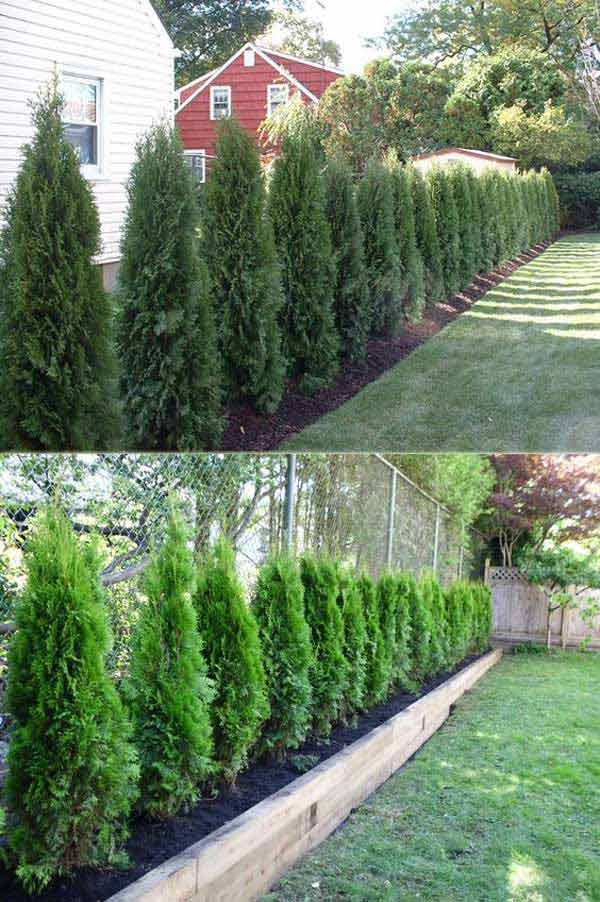
1. Thuja Green Giant
Thuja is the most popular tree for privacy and shade. Dense and evergreen, it can be molded into any shape, making it one of the best hedge plants. Nikki Bruner, plant expert at Perfect Plants , strongly recommends these trees: “Green Giants arborvitae are famous for their fast growth rates, reaching 3-5 feet per year. Not only do they grow quickly, but they are rarely attacked by pests or diseases, and once established, they become drought-resistant.”
2. Leyland Cypress
Do you live in a hot, drought-prone climate? Cypress trees are a godsend for household plots in areas with a hotter climate. Leyland Cypress is a strain worth looking for because it grows taller than most. Bruner loves them for this reason: "They get a little bigger at maturity, growing up to 60 feet tall, and more tolerant of the hot weather in the southern United States."
Cypress trees still do well in more temperate areas, but may struggle in areas with heavy rainfall.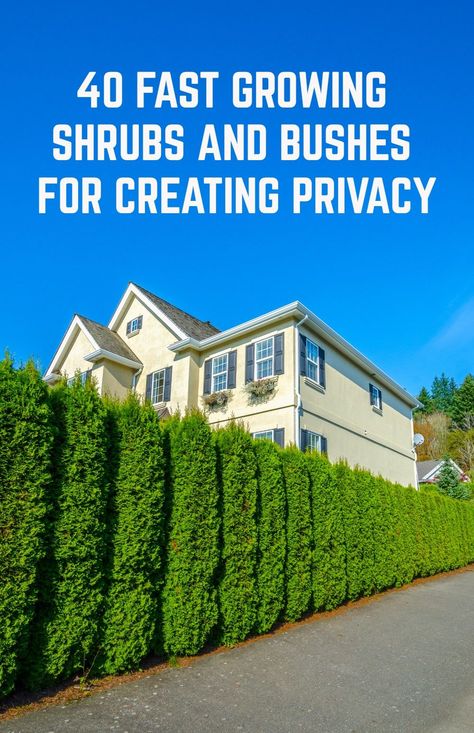
3. Weeping Willow
If you want to make a real impression with your front yard landscaping, willow will give you that wow factor. With their elegantly dangling branches, willows create a romantic look that provides plenty of shade and privacy for your yard at the same time. Bruner says that “its graceful arcing branches sway in the wind and add a touch of elegance wherever you plant it. Weeping willows are extremely cold hardy and easy to grow. They are also great for planting near ponds or wet areas, as they will soak up excess water."
Willows are deciduous, so they shed their leaves in autumn.
4. Autumn Maple
Another deciduous option that's totally worth it for its gorgeous fall garden color alone, maple is a time-honored favorite. Maple trees are also low maintenance, with most varieties requiring minimal pruning. Autumn Blaze is Bruner's choice as it is "a more colorful and vibrant option if your landscape needs shades of red." As the name suggests, this maple turns bright orange-red in autumn, turning into a fiery spectacle.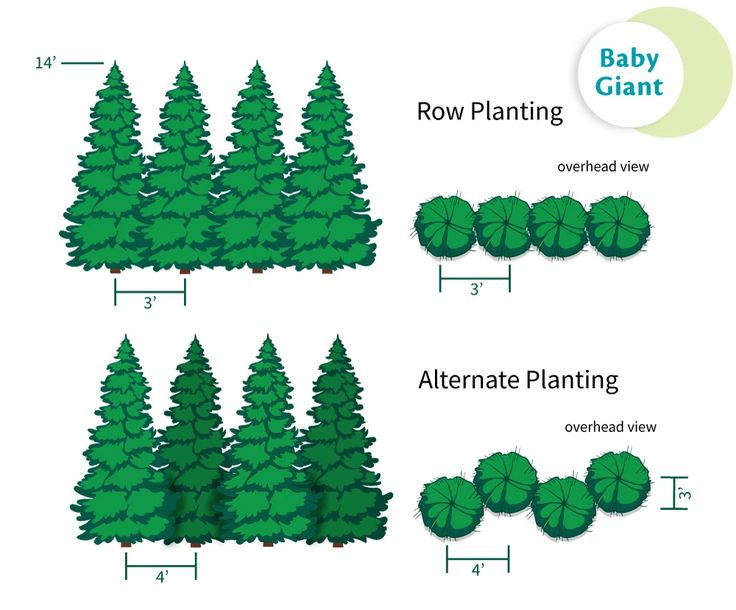 Growing to 55 feet tall and 40 feet wide, it creates an extensive shade canopy and helps absorb the hot sun."
Growing to 55 feet tall and 40 feet wide, it creates an extensive shade canopy and helps absorb the hot sun."
5. Yew
Mysterious and distinctive yews have dense, evergreen dark green foliage, while the female trees bear colorful red berries that add a little extra interest to your yard. Yew can be formed into dense hedges or left to grow naturally. They have a sprawling, cedar-like growing habit that many appreciate for their unique appearance. Be aware, however, that yews are among the plants poisonous to dogs and cats, and the berries are extremely poisonous to humans as well.
6. Holly
Holly is a brilliant all-rounder that provides your yard with shade, privacy and increased security with its spiny foliage. Holly is evergreen and suitable for most temperate climates. Make your own hedge or let the tree grow freely.
7. Cherry
All fruit trees are great candidates for front or back yard privacy, but cherry should be the most aesthetic choice.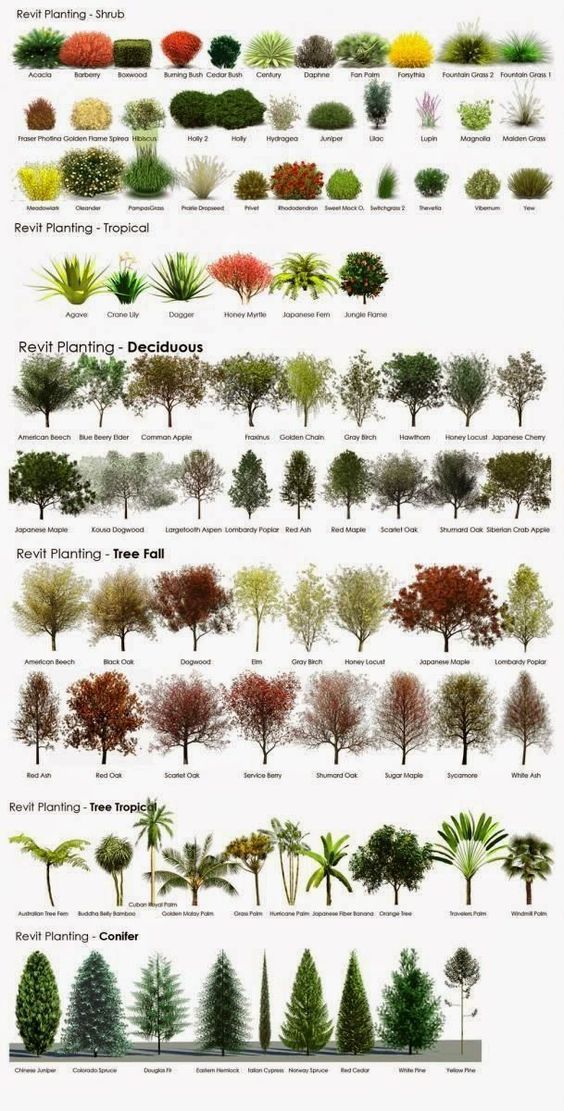 A rounded, dense crown in summer and a spectacular display of pink flowers in spring make this tree a showy tree unlike any other. Just don't plant them near an aquarium or above ground pools, as the blooms will be difficult to clear from water.
A rounded, dense crown in summer and a spectacular display of pink flowers in spring make this tree a showy tree unlike any other. Just don't plant them near an aquarium or above ground pools, as the blooms will be difficult to clear from water.
8. Juniper
A tough, hardy plant known not only for its privacy-enhancing properties but also for its air-purifying properties, juniper is a popular choice in urban courtyards. Junipers come in a dizzying variety of shapes, sizes and colors, so you can really experiment with these trees to add texture and interest to your natural fence. Like other coniferous shrubs, juniper can be shaped into the desired shape or left to grow in its natural form. Some junipers have a spreading or trailing habit and are great for growing on walls or yard fences.
9. Cedar
Cedar trees make a majestic addition to a front or back yard. Atlantic cedar and red cedars will grow very, very tall over time, but if you're looking for ideas for a small backyard, choose Japanese cedar. They have a compact stature and a naturally neat shape that will suit even tiny yards.
They have a compact stature and a naturally neat shape that will suit even tiny yards.
10. Acacia
One of our favorite Acacias are versatile beautiful trees with thick intertwined branches and tiny leaves on them. They look spectacular in the wind, and if you choose Acacia , commonly known as mimosa, will have clusters of fragrant, fluffy yellow flowers in early spring. A must for climates with hot, sunny summers, although it is a low-maintenance garden addition that will work well in most climates.
Which trees are best for privacy?
According to Bruner, “the best trees for solitude are arborvitae with fast growth. This ensures that the business or homeowner gets privacy effortlessly and with simple maintenance.”
Which trees are best for shade?
“Shade-tolerant trees are the perfect addition to the landscape to add focus and shelter from the heat (especially in summer!). Our absolute favorite in the shade is the Weeping Willow because on the other side of the spectrum of shade trees is the Autumn Fire Maple.